5 cars posting big gains despite a slow market
The Hagerty Price Guide is updated quarterly, and our methodology for tracking collector car values takes into account many factors, from auctions to private sales. For a better understanding of how we put it all together, check out this article.
Summer has turned to fall, and those of us in northern states are already thinking of the long winter to come and reluctantly planning for seasonal storage of our collector cars. Taking stock of the past three months, it’s safe to say that summer 2023 was an active one in the collector car market. We observed the second-strongest Monterey auctions of all time, as well as in-person and online auctions turning out a steady stream of sales. But like the crisp fall weather, the market has been cooling overall and showing signs of change.
And yet, despite this slowing, we observed several cars that posted notable gains over the course of the summer. Although the selection looks much different from over a year ago, there is still plenty to analyze. Here are five of the most substantial gainers in the latest edition of our price guide.
1955–58 Studebaker President: +70%
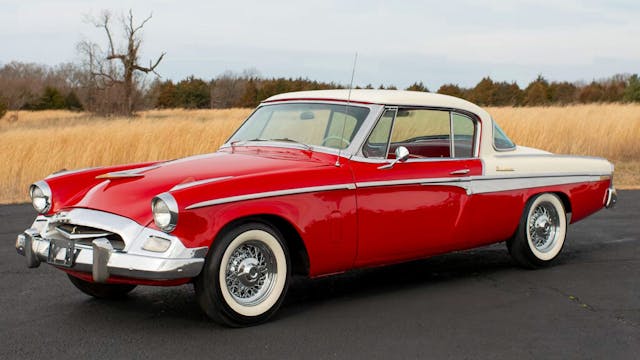
Studebaker Presidents posted a 70 percent uptick in value over the past few months. While the brand may not be as popular as many of its contemporaries, it was for a time one of the oldest and most respected car manufacturers in the U.S. By the 1950s, however, Studebaker was losing major market share to the Big Three, finally breathing its last in late 1963. For the 1950s, the President was the brand’s top-of-the-line model and offered better amenities than its Commander and Champion stablemates.
The rise of the President has been driven primarily by a surge of cars coming to market recently, all of which sold or were offered above prices we’ve previously tracked. A secondary driver (these are still low-volume cars in the grand scheme) is that these cars kept quiet while other American cars of the 1950s saw a renaissance in the market a few years ago. Studebakers just didn’t get the same surge that Chevys, Cadillacs, Fords and other well-known cars from the era enjoyed, and now President prices are playing catch-up. Studebaker is still a challenging marque to call: sales prices are high, but asking prices are even higher. This is where it is important to remember that asking prices do not equate to sale prices, and the longer a car sits on the market, the more apparent it becomes that the expectation of seller and potential buyer aren’t aligning. Regardless, it’s abundantly clear that if you thought Studebakers would be lost to time and ignored, the market begs to differ.
1982–85 Renault Fuego: +57%
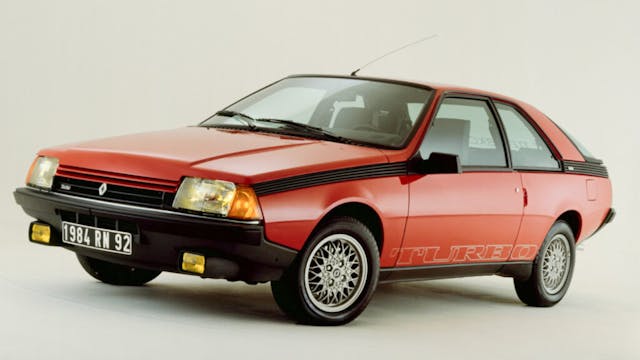
There are two groups of people looking at the Fuego. One is thinking, “I vaguely remember this car and I vaguely remember there being a good reason they stopped selling them here.” The other is thinking, “Wait, they sold a Renault here?” That’s right, folks, Renault sold cars in America for a hot second, but their Frenchness never really caught on. (Peugeot tried and failed, too.)
Sold through AMC dealers, Fuegos were small, fuel-efficient economy cars that actually looked pretty good. If you squint at one, it looks like some inspiration came from some of Citroën‘s better designs. But economy and looks couldn’t save the car from dismal sales, with just under 100,000 units sold in three years.
OK, so these are not particularly well remembered or common. But today they are cheap. You can still buy a nice one for under $15,000, and that’s a “really gotta have it” price. Unbelievably, however, not long ago you’d be nuts to pay more than a couple grand for one. (A big percentage gain on a cheap car still equates to an affordable purchase.) Fuegos experienced no real market value change for many years, so the moving market is having a visible effect here. We can only conclude that post-pandemic increases have effectively filtered into every level of the market—even cheap, forgotten French cars.
1970–72 Pontiac Firebird Formula: +36%
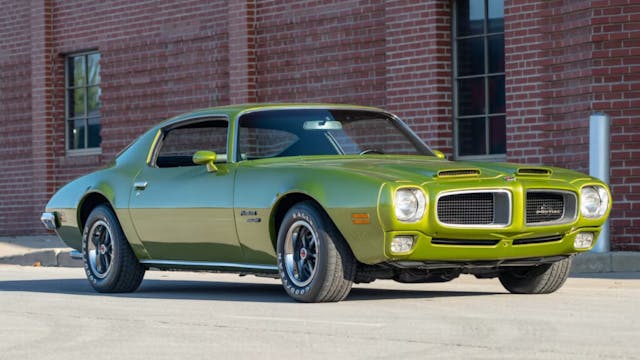
Second-generation Trans Ams are now bonafide automotive stars of the 1970s, from the early white-and-blue cars to the later “screaming chickens” of the Smokey and the Bandit era. But imagine, if you will, being a buyer in the early ’70s: you want all the punch of a Trans Am, but you’d rather not be goaded into drag racing by every kid at a stoplight because they know what you have. Well, Pontiac had just the right sleeper for you. The Formula 400 and 455 offered a more adult aesthetic with all the power of the T/A.
Though the general public took a long time to catch on, Pontiac aficionados have always known that the high-horsepower Formulas are much rarer than their flashier siblings, but still less expensive than the T/A. That changed this summer when a well-equipped 1971 Formula 455 HO sold on Bring A Trailer for huge money, even exceeding the values of a comparable T/A. Before we celebrate too hastily, it is important to remember that another Formula 455 HO sold on the same site in April for a much more modest price. This is a good reminder that single sales should call our attention to a potential market evolution, but they don’t dictate our view of the market—and it may not be the Formula’s time to pass the Trans Am in value. That said, we’ll be watching these cars, as the ones equipped with the same engine have rapidly closed the gap.
1986–93 Buick Riviera: +30%
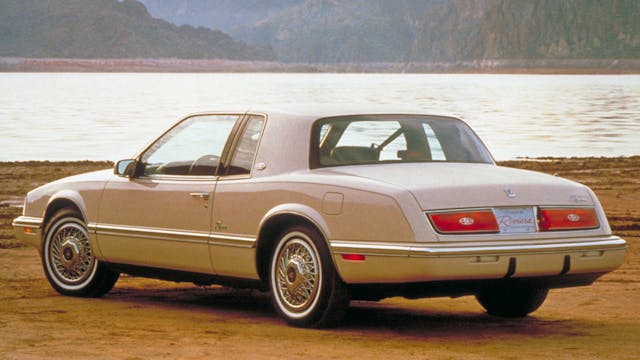
Here’s another one we rarely discuss, the 1986–93 Buick Riviera. The Riv has always been Buick’s top-tier personal luxury model. Unfortunately, while the Riviera started out as a sporty model with a long list of luxury appointments, the 1980s saw a bigger focus on luxury, and less on sporty. The fire-breathing V-8s from the early days were gone, replaced by a transverse-mounted 3.8-liter V-6 engine. Sure, they offered a T-Type version, but before you get excited, this one didn’t have a turbocharger like the Regal-based T-Types. These were the darkest of the dark times with respect to the cars GM was willing to force onto the public.
Were these really that boring? Certain car enthusiasts would be quick to respond, “Hell yes, they were.” But let’s take a step back for a minute. Anyone who has ridden in an ’80s Buick, Oldsmobile, or Cadillac will confirm that the seats are some of the most comfortable ever put into a car, and the digital dash and climate display in the Riviera is cool even by today’s standards… as long as it’s working. This might be a reach for some, but not all that was previously uncool is still completely uncool, especially at the price point of these cars. The nicest one on the planet is still a sub-$20,000 car, and even with a 90 percent increase to our condition #3 (Good) values on these, $10,000 will get you a clean example you’d like to own. Whether you agree or not that these Buicks deserve a seat at the table with the other collector cars, it’s clear they’re no longer cheap used fare.
1968–72 Oldsmobile Vista Cruiser: +30%
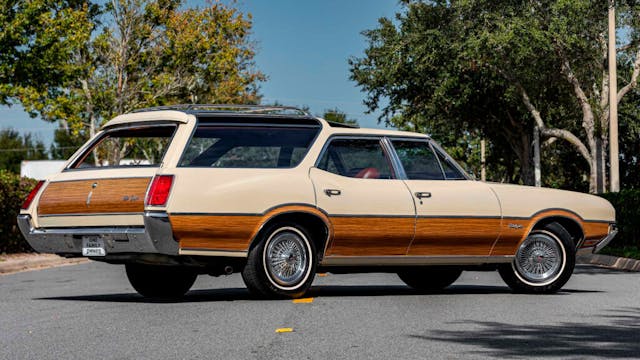
There’s no denying the surge in popularity that station wagons have seen over the past few years. Once as mundane as a minivan, the classic wagon has evolved to hold a sort of cult appeal. Not quite to the hipster levels of the Volvo 240, or to the sport wagon fury furthered by models like the CTS-V and Audi Avants, but there’s been a collective shift for many that these are cooler than people remembered.
Oldsmobile’s contribution to the wagon scene in the form of the Cutlass-based Vista Cruiser is an especially unique entry. Where the Vista Cruiser especially stands out is with the unique Vista Roof offering better views and improved lighting to passengers via additional windows in the roofline. Think of it as Oldsmobile’s take on a 21-window Volkswagen Microbus.
Clean wagons are especially hard to come by, as attrition from daily use and lack of initial collectibility saw many discarded rather than saved when they came to the end of their service life. Over the past few years, however, we’ve noticed wagon prices steadily climb to the point where, in plenty of cases, their values sit close to or above those of their comparable two-door siblings. In the case of the Vista Cruiser, the reason behind the spike in value likely has a lot more to do with it catching up with the market versus being a true breakout. It’s very likely we will see a leveling out of values from this point rather than their continued rise.
***
Check out the Hagerty Media homepage so you don’t miss a single story, or better yet, bookmark it. To get our best stories delivered right to your inbox, subscribe to our newsletters.
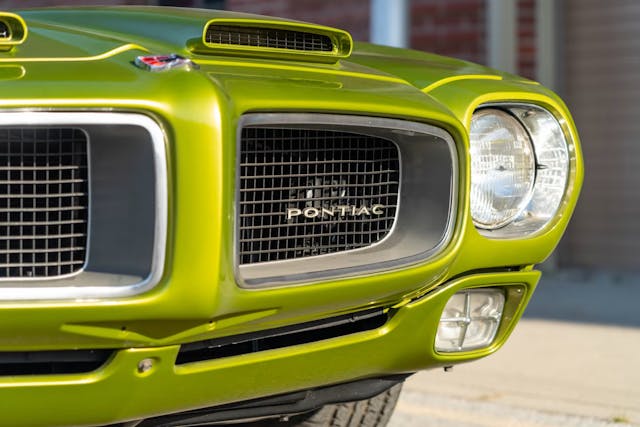


The Formula Firebirds, like the base models and Esprits were parted out to save the TAs. And like so many makes, here in Canada, they rusted out.
They all rusted in the US Midwest too. Perforation at 3 years was not unusual on anything around here, some worse than others.
Seems to me that musclecars are still strong, especially for the best examples. Try finding a mint GTO, even a Duster 340, for less $$$ than the last couple years. Mint ’70- ‘7 3 Z28s have appreciated significantly. And most of the examples at auction have significant issues, in spite of bringing big money. Some of the examples in the article are by nature very small samples – the Stude and especially the Fuego.
Interesting data but likely one offs as none of these cars outside the Firebird have any wide appeal.
I’d take anyone of those cars, memories is what it’s all about. It’s so great that they are still on the road today. Nothing better than the car culture to bring us all together.
Only memories I have of the Studebaker was the one the old lady next door owned when I was a kid, and I seem to have amnesia as regards the Fuego. Where did they come up with this group of cars? Deadline is a terrible master.
Had a 68 Vista Cruiser from 1981-86. Total rust bucket that needed engine work but good car otherwise>>held a lot of lumber, never got stuck in the snow and would fry the tires up the block even though it ran only on 7 on the high miles big block 2 bbl 400. Rusted gas tank killed it. Pulled the engine and whatever was still good. The problem I have with the values today is that they are WAY high for the junk that is advertised. I’d like to have another one but I am NOT paying $30-40k for what I see out there. I suspect they are probably Bondo buckets because no-one makes body parts for them, only the front fenders exchange with Cutlass and maybe the front doors with the 4 door sedan. It take a lot of skill to make your own patch panels. There are several out there listed for around $10k that were worse than what I sent to the scrap yard 37 years ago.
‘73 firebird rusted all across the back window for no good reason. So if you are looking for one check that area real good!
Well when I say no good reason, I mean other than GM cheaping out on the steel they used.
Nice comfy car though. Oh and my nephew blew it when he sold his ‘74 SD455 Formula. Big mistake.
Glad to see the Fuego from Franco-American Motors (AMC) included in this list. Journalists of the time thought it was good value and performance for the money, even with some minor electrical problems. Apparently it sold well in Quebec.
I bought a ‘75 Firebird Esprit used in 1979, and discovered quickly how Western NY winters ate these cars up. It had 60,000 miles and was well maintained but it had water leaking into the back seat area where the rear window channel had rotted away in less than 5 years. Car was beautiful, red with white vinyl top and white interior with red carpet and dash. Although it was no Formula it was a decent car but I didn’t keep it long. The hood on the Formula is the best looking hood ever with the forward facing scoops.
I think the ‘89 Riviera refresh was hugely successful from a design standpoint. It actually looked like a more modern version of the previous gen. If the ‘86 had had that design, I suspect that generation would have sold much better from the get-go and wouldn’t have given GM such a black eye. By 1989, however, the damage was done.
Yep – that was a great redesign, and made the “little” Riviera at last worthy of the famous name. Around my Midwestern area, it is VERY rare to see a Riv from this generation at a car show or anywhere; same is true of the Toronado of that era.
I always preferred the “Forumula” Firebird over the T/A cars. Glad to see they are being appreciated. That said the second generation Camaro and Firebird “quality” of trim and interior was not good compared to the first generation.
In the 80’s I built a “442” 1969 Olds Vista Cruiser. Stripped off the wood grain vinyl. White paint with metallic blue were the wood grain was, silver lower at trim. Installed 442 gauges, buckets, console and an built Olds 455! Replaced the rear axle trailing arm with 442 units with sway bar. I still miss that car.
i don’t see eye to eye with this assessment
ive got a 74 formula, I restored it from a primer junker in 09. at car shows only firebird owners look at it everyone else just walks by. I put a 68 gto motor in it with forged pistons all the right hot rod stuff, roller everything ect. its a wonderful driver with higher gears in the diff a freeway cruiser that gets 16 mpg with a 2600 stall converter. tried to befriend gto club guys. they treated me like crap. so I drive and enjoy frying the tires at will. never see those anywhere. and people call it a trans am. only 1200 produced that year.
It is rather hard to imagine the Fuego increasing in value. Or any Renault of that era, for that matter, except maybe the Alliance convertible.
Vista Cruiser has always been popular thanks to That 70’s Show.
Found a 67 bird in a back yard while doing a plumbing job for an older guy I knew. It was 4 years old and in great shape. He said it was his sons car and he was in the army. He said it kept losing coolant somewhere and feared it had a crack somewhere. His son wanted it sold. I bought it cheap and after some compression tests and seeing bubbles in the coolant I took the heads of the engine and found a bad head gasket. Put a new set on and no more troubles. It was supposed to be a 400 engine but really was a 389 probably put in at the factory to use up the old stock in the fall of 1966.